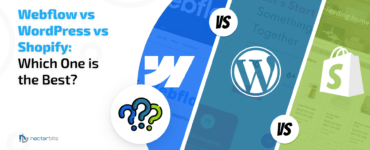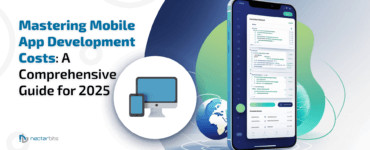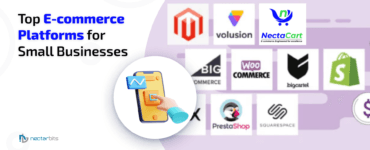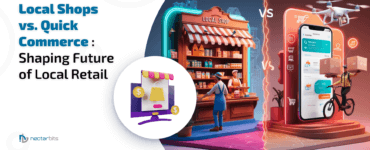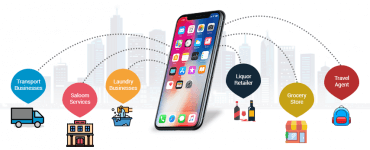The 7.7 billion people across the globe making online purchases from around 24 million websites and out of them, just less than 1 million Ecommerce stores are selling more than $1000 a year.
It’s a sign there is a ton of room for growth in the Ecommerce landscape that’s growing at an astounding pace.
- Nearly 25% of the world’s population, that’s 2.05 billion will be digital buyers in 2020 and is expected to hit a massive of 2.14 billion by 2021.
- The Ecommerce sales account for 15.5% of retail sales worldwide in 2020 and are expected to make up 17.5% by 2021.
- Shockingly, nearly half of the small businesses in the USA don’t have websites to sell online.
The alarming facts prove that there are a lot of potential customers and it’s the best time to jump on the Ecommerce mobile app development bandwagon as it’s expanding in every direction and becoming a part of the consumers’ life worldwide.
The lucrative opportunity appeals to every new entrepreneur, but the success in dividends can be achieved only when the right business model is chosen. You might be puzzled with the business model term because an Ecommerce store means a platform where the suppliers and buyers can make the transactions. Well, the basic concept is right, but the buyers are not always end-customers. They can be business, government, or customers.

The decision for the business model must be taken intelligently as every business model doesn’t fit into your target niches, your budget, your risk tolerance capacity, and the experience. The business model builds the foundation of the Ecommerce store for long-term success and a single mistake can put all the efforts you made in choosing the right product, finding reliable sellers, and crafting marketing tactics at stake.
Here, the journey for the business model selection starts with knowing your customers before setting up the Ecommerce store. You should know to whom you are going to sell the business offerings- the end-customers, businesses, or government (In exceptional cases). This decision will turn your business model into B2B, B2C, C2C, or C2B.
Read more : Role of E-commerce Website In Today’s Business
Let’s understand primary Ecommerce business models:
B2B: Business to Business Ecommerce
As the acronym suggests in this type of business model, online transactions are carried out between two businesses which can be wholesalers, distributors, and manufacturers. The private industrial market is not so prominent in the Ecommerce space, but due to the swift migration of manufacturers and wholesalers from legacy systems to open, online platforms, strong growth is observed, that’s expected to grow to $6.7 trillion by 2020.
If you are controlling the manufacturing, your target market prefers bulk ordering with orders of a specific size, material, and other specifications, you can sell the products at a competitive price, and has inventory and supply chain management capabilities, then B2B business model is a perfect fit for your Ecommerce store, which even helps in generating huge ROI.
B2C: Business to Consumer Ecommerce
This is the most popular model that first comes to the entrepreneur’s mind when they thought of building an Ecommerce store. It involves the businesses directly selling the products or services to the customers online. From the inception of the internet, the B2C model has evolved to a great extent.
Staples, Walmart, Gap, and Target are some of the brick-and-mortar stores that have extended the services online with the B2C model. Instead, Overstock.com, Newegg.com, and ModCloth are some of the online retailers that are providing the services just online.
C2C: Consumer to Consumer Ecommerce
This model facilitates transactions between consumers where they can buy, sell, or exchange the products or services. The C2C platforms generate revenue through transaction fees and charging list and ensure a high level of trust, and quality control as the customer deals with third-party businesses.
eBay, Amazon, crypto-currency exchanges and Craiglist are the mammoths in the C2C Ecommerce model that are continuously innovating and increasing the market share.
C2B: Consumer to Business Ecommerce
This model is quite uncommon in the Ecommerce landscape and less intuitive, but you are pretty familiar with the C2B model. As the name suggests, the customers are selling the services to business.
The freelance platforms such as Fiverr, and Upwork, influencer-matching marketplaces like Influenza, and the independent workers are the best examples of this C2B business model. The businesses search for skilled and proficient service providers and hire them that match their goals. A certain percentage of commission is deducted by the platform for connecting the businesses and the customers.
The model is certain to hold a tight grip in the market soon as 43% of the U.S workforce will be freelancers by 2020.
Government transaction with Businesses or customers
The government or administration also falls under the Ecommerce model structure when the government requires the business’s services or customers are offering something to the government. It has created two business models under this section.
B2G: The business sells the products or services to the government and considers them as their client with contracts in the long term. With high-profit margins, the businesses also enjoy tax benefits, unlike other Ecommerce businesses.
C2G: Here, the consumers won’t initiate any type of transactions; instead, they just provide value to the government or administrative agencies
. For instance, the government’s tax agency has decided to ditch paper tax filing and introduced an electronic tax filing portfolio wherein the transaction is started by the government and new technology adoption by the consumer is the value that they are adding to the government service.
5 Types Of Ecommerce Business Revenue Models
After deciding for the right business model, if you think your success is guaranteed, then you are wrong. Technological advancements, evolving market trends, and the user’s expectations have brought an enormous transformation in online commerce. Online business is not conducted the way it was done three decades back.
Read more : E-Commerce Platforms for Small Business in 2020
The Ecommerce space is experimenting with a range of revenue models to secure the position and the consistent stream of ROI in the market. Also, zero restriction imposed on the revenue generation model in the retail industry allows the E-retailers to add possible variations to the revenue models.
There are a couple of revenue models that are very popular in this Ecommerce space:
- Private Labeling and Manufacturing
When the budding entrepreneurs don’t have deep pockets or resources to add life to the product idea, then they get it built from the manufacturers, label it, and sell it under the brand label.
Private labeling is emerging as a lucrative opportunity and is expected to quadruple in the next five years because they own design, production technique, and the rights to sell the products under the private brand name.
With complete control over the manufacturing and operations cost and no seller involvement in the product selling, the private brand owners can build and sell the products at high margins.
- White-Labeling
When the entrepreneurs don’t want to get entangled with the intricacies involved with product manufacturing management and quality control, they choose the white-label app development option.
The white-label retailers rebrand the product purchased from the supplier and resell it to the end customers. In the absence of a unique selling point, the brands differentiate themselves in fierce competition by applying unique marketing tactics and using various distribution channels.
- Drop-Shipping
Buying the new warehouse space and stocking inventory is also a hassle when the entrepreneurs can’t spend bundles. The dropshipping model comes to rescue by allowing the businesses to directly purchase the products from the suppliers and making the suppliers directly ship the product to the customers without needing to stock even a single item.
Read more : Benefits of E-Commerce online store
The dropshipping model just requires the businesses to market the products and sell them at a reasonable price with zero investment in warehouse space, order management, inventory management, website development, customer support, and sales strategies.
Subscription
The increasing abandonment rates and high inventory risks potentially impact the profit margins in the Ecommerce space. That’s where the subscription-based Ecommerce model is picking up the pace at speed.
The food delivery, books, training courses, videos, and consumer goods subscriptions are getting popular due to the utmost convenience it offers to both businesses and customers. Under the model, the customer can subscribe to a service for a specific period, and when the subscription expires, the customers can renew or cancel the service to meet future requirements.
The businesses are no more required to plan for inventory, order delivery, customer retention, and profit margins.
Wholesaling
The model is famous among B2B, B2C, and C2B business models where the products are ordered in bulk and provided at discounted rates. Well, it comes with high investment in warehouse space, inventory and stock management, order tracking, and more.
However, the model has paid off to some of the Ecommerce stores like- Beard & Blade that has doubled the revenue in a year with the wholesaling model.
Conclusion
The Ecommerce business model may have made your head spin because it’s rarely heard. But, it plays a vital role in making your Ecommerce business idea stand with the right foundation. Later, the right planning and selection of revenue models let you stand out and be successful.
Don’t get confused and get your Ecommerce business structure sorted out a first hand so that you can avoid the later stage of getting overwhelmed. Read once, think twice, and then make the decision wise to make the business suits your risk tolerance, experience, and budget.



